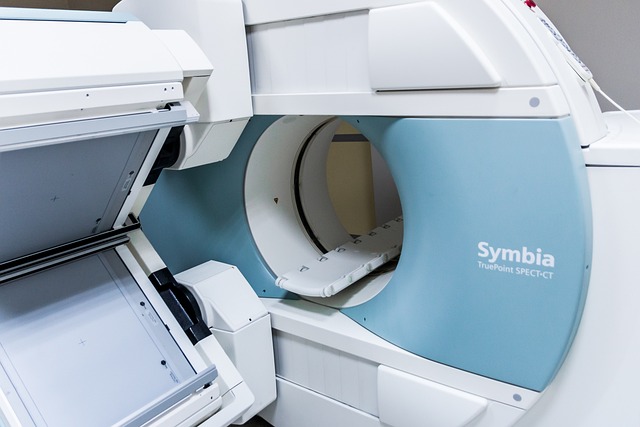Functional MRI (fMRI) is a groundbreaking technology that maps brain activity by tracking changes in blood flow, offering insights into the human brain's complex workings. This non-invasive method has revolutionized neuroscience research and clinical diagnostics, uncovering neural connections and correlating them with cognitive functions and various neurological conditions, such as Alzheimer's and Parkinson's diseases. With continuous advancements in scanning techniques and data analysis, fMRI is poised to drive personalized neuroscience and transform the prevention, diagnosis, and treatment of neurological disorders.
Discover the remarkable world of functional MRI (fMRI) and its pivotal role in mapping brain and nerve activity. This advanced neuroimaging technique offers a dynamic view into the complex workings of the human mind, unveiling specific regions activated during various tasks. By tracking blood flow changes, fMRI pinpoints active neural networks, providing invaluable insights for neurological research. Explore how this technology is reshaping our understanding of the functional nervous system and its diverse applications in both scientific study and clinical practice.
Understanding fMRI Technology: A Glimpse into Its Functionality
Functional MRI (fMRI) is a cutting-edge technology that offers a unique window into the functioning of our brain and nervous system. By measuring changes in blood flow, fMRI provides precise maps of brain activity associated with specific tasks or stimuli. When a particular area of the brain is active, it consumes more oxygen, which leads to an increase in blood flow to that region. This change in blood flow is what fMRI detects, translating into detailed images that reveal brain activity patterns.
The technology works hand-in-hand with magnetic fields generated by powerful magnets, which temporarily alter the alignment of hydrogen atoms in our bodies. As these atoms realign with the magnetic field, they emit faint radio signals. fMRI devices pick up these signals and use them to create high-resolution images, allowing researchers to observe neural activity in real time. This capability has revolutionized neuroscience research, enabling us to explore the intricate connections within the brain and understand how different areas collaborate to enable complex cognitive functions.
Mapping Brain Activity: How fMRI Pinpoints Specific Regions
Functional MRI (fMRI) is a powerful tool for mapping brain activity by tracking changes in blood flow, which are directly correlated with neural activity. When specific regions of the brain are activated, they require more oxygen-rich blood, leading to an increase in hemoglobin concentration. fMRI sensors detect these changes, allowing researchers to pinpoint exactly where in the brain certain cognitive processes or behaviors originate.
This technology enables scientists to observe the functional nervous system in action, identifying distinct brain regions responsible for various tasks and providing insights into how different areas communicate with one another. By analyzing patterns of activation across the entire brain, fMRI offers a comprehensive understanding of complex mental functions and behaviors, making it an indispensable tool in neuroscience research.
Unveiling Nerve Connections: The Role of fMRI in Neurological Research
Functional MRI (fMRI) has emerged as a powerful tool in neurological research, offering unprecedented insights into the intricate web of nerve connections within the human brain. By measuring changes in blood flow, fMRI can detect active brain regions and their interactions, providing a dynamic map of neural activity. This capability allows researchers to unravel complex neural networks and understand how different brain areas communicate with each other.
One of the key advantages of fMRI is its non-invasive nature, enabling scientists to study the functional nervous system without causing any harm to the subject. This has facilitated extensive investigations into various neurological conditions, from mapping cognitive processes in healthy individuals to exploring dysfunctions in diseases like Alzheimer’s or Parkinson’s. The data obtained through fMRI contributes significantly to our understanding of brain function and dysfunction, paving the way for advancements in treatment and management strategies for neurological disorders.
Applications and Future Prospects: Expanding Our Understanding of the Nervous System
The applications of functional MRI (fMRI) extend far beyond mere imaging, revolutionizing our understanding of the functional nervous system. By tracking changes in blood flow, fMRI non-invasively maps brain and nerve activity, providing insights into cognitive processes, emotional responses, and even disease states. This technology has found use in various fields, from neuroscientific research to clinical diagnostics and treatment planning. For instance, fMRI helps uncover the neural correlates of diseases like Alzheimer’s and Parkinson’s, enabling earlier detection and more targeted interventions.
Looking ahead, the future of functional nervous system MRI holds immense promise. Advancements in scanning techniques and data analysis algorithms are improving spatial and temporal resolution, allowing for even finer-grained mapping of brain function. Integrating fMRI with other imaging modalities and genetic information could lead to personalized neuroscience, where treatments are tailored to individual neurobiological profiles. As technology continues to evolve, fMRI is poised to play a pivotal role in expanding our knowledge of the human brain and nervous system, ultimately enhancing our ability to prevent, diagnose, and treat neurological conditions.
Functional MRI (fMRI) has emerged as a powerful tool for mapping brain and nerve activity, offering profound insights into the complex workings of the functional nervous system. By non-invasively tracking blood flow changes, fMRI enables researchers to pinpoint specific brain regions activated during various cognitive tasks or neurological conditions. This technology has significantly contributed to our understanding of brain function and nerve connections, opening up new avenues for neurological research and treatment development. As fMRI continues to evolve, its potential to revolutionize the study of the functional nervous system remains vast, promising exciting discoveries in the years to come.
